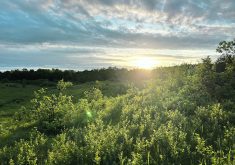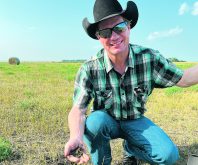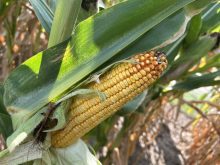Two Irish technology companies use satellite imagery to help livestock producers track how well their grass is growing
Grassland farming has taken on a whole new dimension with a technology that accurately measures the height of grass from space.
The innovation was developed in Ireland earlier this year by two technology companies, Origin Enterprises and Aspia Space. The goal was to find ways to increase farm productivity, operational efficiency and profitability.
“At Origin Enterprises, we are always promoting sustainable use of land while providing simple-to-use solutions to real farm problems,” said Kieren Holden, grassland digital specialist.
“We identified measurement of grass as a real pain point for farmers. Very few farmers are measuring grass, yet the link between grass measurement and profit is very strong in our core markets.
Read Also

Beef cattle more prone to trace mineral deficiencies
The trace mineral status of our cows and calves is a significant challenge for western Canadian producers and veterinarians.
Research has shown that for every extra tonne of grass dry matter that dairy farmers can utilize, farm profitability rises by $377 per hectare or over $22,100 per average size farm per year. Following some research on why so few farmers regularly measure grass covers, we identified two key challenges — time and specialist skills.”
He said the company was already producing satellite-derived crop growth stage models and investigated whether those skills were transferable to grass.
While time was a major challenge for farmers, the team addressed the specialist skill elements farmers also faced, which led to the development of grazing plans, projections and other predictive models. The result was a tool called GrassMax.
“To date, we have only evaluated our grass measurement technology over predominantly perennial ryegrass in their swards,” said Holden. “Our arable models provide insights for a wider range of grass crops including wheat, barley, and canola, among others. The technology should be transferrable to almost all other crops.”
The time needed to walk a farm and record grass measurements can be considerable and labour costs can be substantial.
“Our satellite predictions can replace this cost for farmers,” he said.
GrassMax is smartphone based, allowing farmers to download the app and carry out tasks such as mapping their farms. Farmers can map 30 to 40 fields in 30 to 45 minutes using their phones, he said.
“Once they have completed the task, we can begin to provide them with grass cover predictions. The more information the farmer enters, the more value they receive. Entering animal numbers and feed purchases will enable us to provide the farmer with a manure and fertilizer plan to optimize soil fertility and crop growth.”
Holden recognized farmers must balance different resources such as soil health, crop nutrition, crop protection, stocking densities, climate and legislative restrictions. Using GrassMax creates a digital image of the farm, providing a platform using these resources before evaluating insights and actions for the farmer.
“We identified busy family farms as key users of GrassMax,” he said. “These farmers tend to be quite task-oriented with limited additional farm labour beyond themselves. They need to have access to data on the go while in the field. Our users have access to the data they need when they need it and can record actions such as nutrient applications while in the field, reducing the time required for farm paperwork.”
Origin Enterprises works in partnership with Aspia Space, whose ClearSky technology uses artificial intelligence to deliver cloud-free imagery of the ground, making satellite data more reliable for farming applications.
“ClearSky imagery estimates grass height to within an accuracy of just 1.5 centimetres from a vantage point of nearly 700 kilometres up in space,” Mike Smith, co-founder of Aspia Space, said in a news release.
“To put it in context, imagine standing in a field in Amsterdam and being able to accurately measure the height of the grass in a field in Dublin. Not only can we map the grass height down to a resolution of 10 metres and see variations across a paddock, but we can also monitor how it is changing over time. This is a great demonstration of how we can combine space imagery with ground truth data, magnifying its power.”
“ClearSky technology and its grass AI application are two of the tools we use to drive our decision support insights within GrassMax,” said Holden. “We can overlay data from these technologies with weather forecasting, animal intakes, harvest events and nutrient recommendations, to name just a few, and create a digital twin of the farm to provide the farmer with information that helps them make more informed decisions in less time.”
The researchers are currently addressing various challenges that GrassMax may face, including its marketing parameters.
“GrassMax is currently just available for use in Ireland,” he said. “We are evaluating the product here in some really challenging environments for precision agtech tools (wet and windy weather, changing topographies, cloud cover, etc.) to validate its robustness.”
He said they want to hear from other parts of the world that are interested in bringing in the technology and adapting the regulations.
Currently, they have a group of farmers evaluating the technology and providing feedback on accuracy, usability, and value. Farmers in Ireland estimate it can take two to four hours to walk their farms, recording grass measurements weekly, which can add up considerably in labour costs over the course of the grazing season.
The satellite predictions can replace those costs. Holden was pleased that 82 percent of the farmers were keen to continue using GrassMax even after the testing period.
Farmers who describe themselves as not very phone-minded have said carrying out tasks in GrassMax is easy to do while others have commented that the visual display of the paddocks on one screen makes it easier to see what is happening during growth on the farm.
The company is hoping to launch GrassMax to a wider audience and more countries in 2024.















